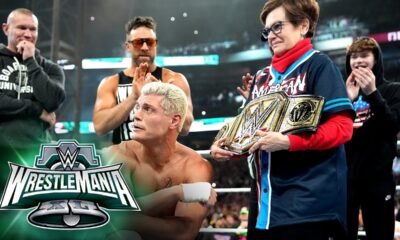NFL
NFL Touts Diversity Programs For Black NFL Coaches. It’s Not Enough

Concurrent with the NFL Spring League Meeting for owners was the Head Coach Accelerator Program, a mixer designed to improve opportunities for prospective head coaches from “diverse backgrounds,” a phrase that primarily means coaches whose backgrounds do not match the primarily White and male head coach makeup we see populate the league.
NFL Accelerator Program and DEI Efforts Not Enough
The NFL has been proud of its recent efforts to promote diversity, but questions remain about the overall effectiveness of its approach and how it can help Black NFL coaches.
The NFL also announced the results of a report compiled by the Diversity Advisory Council they hired last spring, a group of largely outside business leaders, academics, and former league executives, to provide a report on NFL practices and advise on best practices going forward.
Dasha Smith, executive vice president and chief administrative officer for the NFL, spoke about the success of the Diversity Advisory Council and the NFL’s Diversity, Equity, and Inclusion efforts. “[The council has] spent over 5,000 hours meeting with owners, club and league staff in addition to reviewing the many policies, practices, and procedures, as well as data,” she said. “They’ve reported on many things and what they’ve heard, but also how committed the class and the league office are on this topic of inclusion and equity.”
Jonathan Beane, senior vice president and chief diversity and inclusion officer for the NFL, spoke about the success of the Accelerator Program itself. “It’s been a wonderful experience,” he said. “The overall objective of the program is about development, really understanding the business to football, but most importantly, networking and connecting and networking with each other, networking with club owners and also club decision makers.”
He added that “This is an ongoing effort. None of these are one-offs.”
The Accelerator Program Deals with One Barrier to Diversity in NFL Coaching
This is one prong of the latest efforts the NFL has made to address the gap between the player population — about 70 percent Black, according to the NFL — and the head coach population — 12.5 percent of whom are Black and 81.3 percent of whom are White.
To the extent that this deals with a specific barrier facing potential Black coaches, it’s effective. It’s already difficult to determine the quality of a head coach candidate because performance as a coordinator or quarterbacks coach does not help predict performance as a head coach. Often, owners and front offices will defer to search firms or their own internal network. More than most jobs, it’s about who a candidate knows rather than what they know.
MORE: NFL Spring League Meeting Notebook
Black candidates have traditionally had smaller networks, due to a host of systemic factors that are difficult to account for; many White coaches are related to coaches already in the league, allowing them to interact with coaches and front office members for years before Black coaching candidates enter the scene. White coaches were also more likely to play positions typically tabbed for coaching experience upon entry into coaching 20 years ago when they first started out.
Those connections are critical when moving up the coaching ladder — from entry into the ranks as a quality control assistant to becoming a position coach when a team changes coaches and needs to hire new staff. The final stage of the process, becoming a head coach, requires those networked connections as well. The Accelerator Program aims to fill that gap by connecting coaching candidates with owners and general managers over a several-day period.
The NFL has touted the success of the Accelerator Program, pointing to hires like Ran Carthon, the new general manager of the Tennessee Titans, and Brian Johnson, the new offensive coordinator of the Philadelphia Eagles.
Though the program only helps those coaches who have already got a foot in the door, it works with other programs like the Bill Walsh Diversity Coaching Fellowship (sometimes referred to as the Minority Coaching Fellowship), meant to accelerate the placement of underrepresented backgrounds into NFL coaching. The program first began in 1987 and is named after Bill Walsh, who came up with the idea.
Some teams run a concurrent diversity coaching fellowship, like the Indianapolis Colts through their Tony Dungy Diversity Fellowship, meant to supplement the coaches they hire through the NFL-run Bill Walsh Diversity Coaching Fellowship.
These work in coordination with the Rooney Rule, which requires teams to interview two candidates for head coach from diverse backgrounds and one candidate from a diverse background for the positions of offensive coordinator, defensive coordinator, and quarterbacks coach — all considered pipelines to the head coaching position.
On top of that, the NFL rewards teams for developing minority candidates for head coach or general manager positions, awarding them with a third-round pick in the NFL Draft for every person hired into those roles for another team. In the 2023 NFL draft, the Cleveland Browns and Kansas City Chiefs were awarded draft picks for developing Kwesi Adofo-Mensah, the general manager of the Vikings, and Ryan Poles, the general manager of the Chicago Bears.
The San Francisco 49ers were awarded three draft picks for developing Carthon, Mike McDaniel, head coach of the Miami Dolphins, and Martin Mayhew, general manager of the Washington Commanders. The 49ers were also the first team to hire Adofo-Mensah out of the world of finance, though they were not awarded a pick for that.
As Charles London, the Tennessee Titans quarterbacks coach and pass game coordinator, said of the Accelerator Program, “It’s a great opportunity to network with my peers around the league in kind of a non-football competitive environment.”
He added, “The agenda that the league set forth for some this week has been great. It sparked a lot of great discussion last night today, and I’m sure it’ll carry it into tomorrow. Another unique aspect of this that I really enjoyed last year was our networking with the different owners around the league to bring a rare opportunity to have all the owners in one spot. It’s a really unique environment.”
All of these programs from the NFL are meant to deal with a number of the obstacles associated with the lack of diversity in coaching ranks and, on the surface, seem capable of addressing them. To the extent that each program has successes, it’s easy to point to these ventures as being successful — coaches are hired from the Diversity Fellowship, Accelerator Program, and through the pipeline.
Black Coaches Get Fired Quicker and More Often
But the makeup of the league is much more than just who gets in the door. Retention matters too, and there’s not much the NFL can do about that, at least from a rules perspective. The Washington Post last year found that Black NFL head coaches are twice as likely to be fired over White head coaches with similar records. A Black head coach with nine wins had the same odds of being fired as a White head coach with six wins.
Even if the hiring rate of Black coaches was equal to that of White coaches, a lower retention rate for Black coaches means that the league will be overwhelmingly White.
If there were 24 open coaching positions and 12 were filled with White coaches and the other 12 with Black coaches, we could see four Black coaches and two White coaches fired. Those six spots would be filled with an equal number of White and Black coaches, resulting in a league of 10 Black coaches and 14 White coaches. Repeat the process over a number of hiring cycles, and the proportion of Black coaches drops.
And, comparatively, this is an optimistic scenario. The NFL is quick to praise the Accelerator Program, but the rate at which Black coaches are hired is as low as it’s ever been in the Rooney Rule era. Black front office hires are up, but those have lagged behind so much historically, that there’s still work to do to match the rate of non-White hires at the coach level.
If anything, coaches hired or spotlighted through the Accelerator Program might have been hired anyway or replace minority coaches who would have been hired through other means. There’s no meaningful data to suggest that these programs produce improved leaguewide results, at least not yet.
The Talent Pool Can Be Outside of the NFL’s Control
One of the issues here is that coaching hires come from a biased pool themselves, one that hasn’t really been corrected until very recently. One-fourth of the NFL head coaches were former quarterbacks in the NFL or in college.
Given that these coaches are closer to 50 years old than 30, that would mean we’d need the quarterback population 30 years ago to look as diverse as it does now. The NFL cannot control how colleges recruit athletes or which players get funneled into the quarterback position in middle school.
That said, a look at the candidate pool does reveal more bias from the NFL, not just the college ranks. All of the head coaches who were former quarterbacks are White, which is an extreme proportion even after accounting for the historical forces preventing Black players from becoming quarterbacks in college and the NFL.
Black head coaches are more likely to need NFL playing experience instead of stopping at the FBS, FCS, or even Division II, Division III, and NAIA levels. White coaches who have coached once before don’t need as strong of a record as Black head coaches with previous head coaching experience.
The recent cases of Josh McCown, almost hired by the Houston Texans one year ago despite no professional coaching experience, and Jeff Saturday, the interim coach for the 2022 Indianapolis Colts who had only coached high school football, make this clear.
The background of current NFL coaches — all of whom played football at a college or NFL level — underscores the point that the labor pool that coaches should be compared to is the player pool.
MORE: NFL Kickoff Rule Change — What Are the Changes and the Impact?
This is to say that even though the current proportion of head coaches in the NFL who are Black matches the proportion of the US population, there’s clearly some level of discrimination preventing Black coaches from becoming head coaches. The US population is not the candidate pool — former players are.
We are beginning to see some fast risers in the spirit of Sean McVay, Kyle Shanahan, Zac Taylor, Kevin O’Connell, and so on in coaches like Houston head coach DeMeco Ryans, Dolphins head coach Mike McDaniel, and Patriots defensive coordinator Jerod Mayo, but this prodigy label is still a mostly White phenomenon and has only recently been applied to Black head coach candidates.
If the pipeline programs can ameliorate this issue — which is a classic case of working twice as hard to earn half as much — then it will be worth it, if only because it gives Black head coaches an opportunity earlier in their career.
When asked about this data, Smith said, “Certainly, the DAC has looked over some of the turnover data, for sure. And whether there’s differences between on diverse and non-diverse coaches.” She added, “I think one of the takeaways that the DAC reported out today is that we need to provide as a leader more support to new coaches, and in general, and how do we provide a better network of support for them. They touched on how they can have their own coaches at times, you know, being an essentially an executive in the club.”
This response seems to assume that fired coaches are coaches that have failed and need more support instead of acknowledging any bias in the decision to determine who is failing. It presupposes neutrality on the part of the decision-maker and puts the onus on the coach, as if the act of moving on from a coach is a neutral act.
Not only is this not the case, but it could look even worse than it seems at first glance. Washington Post’s data does its best to compare like for like, but The Athletic points out that Black coaches are often saddled with worse quarterbacks and worse circumstances. One recent example is David Culley, a coach given only Davis Mills to work with and fired after one year.
The NFL Cannot Solve Ownership Bias
This doesn’t necessarily have to be intentional, but there could be an unconscious bias to excuse White coaches for their circumstances more than Black coaches.
Every year, after another disappointing hiring cycle, fans are quick to defend owners by pointing out that owners wouldn’t have incentives to be racist — they wouldn’t want to hire an intentionally worse candidate in such a competitive field. To win, you have to give yourself as many edges as possible, including hiring the best coach candidate.
The problem is that the owners themselves could be making biased judgments about who the best candidates are. Racism does not exist as a purely conscious hatred of a particular group of people but expresses itself in a variety of ways, conscious and subconscious. Earnestly and mistakenly judging a job candidate as less skilled for reasons that have nothing to do with the job is both human and discriminatory.
A hiring manager who doesn’t realize that they are making prejudiced judgments about a candidate because of their skin color is still engaging in hiring discrimination, even if they earnestly believe the candidates that they rejected were inferior.
The second issue with that line of defense is that owners are not subject to the competitive pressures of a head coach or a general manager. They don’t live in the hyper-intense, results-oriented NFL; players and coaches do. If a team owner consistently hires poor coaches, no one is going to replace them. The NFL may be a “what have you done for me lately?” league, but that applies to people who can be fired, not the people doing the firing.
The NFL indicated that the report they received from the Diversity Advisory Council showcased an ownership group eager and willing to address bias in hiring. One of the findings from the DAC, Smith said, was “how incredibly committed the entire league — all 32 are — to this topic. I think they were surprised by that.”
That commitment has, historically, played out in some pretty unusual ways.
Ownership Firing Is as Important as Ownership Hiring
That not only applies to the hiring process but the firing process. If Black coaches with a similar record as White coaches are being fired at twice the rate of their colleagues, there isn’t much the league can do. Before anything else, the league has little control or incentive to control owner firing decisions.
Roger Goodell and the competition committee don’t have unfettered authority over owners, they only have the authority that the owners let them have. Owners, even the most well-meaning ones, wouldn’t want to have restrictions on who they can fire.
MORE: NFL Officially Votes To Establish Thursday Night Football Flex
If the issue is that owners are incapable of making unbiased hiring decisions, no amount of NFL pipeline work can resolve the fundamental issue. The bias doesn’t have to be strong for it to play a big impact, either. As one experiment in skill-based hiring demonstrated, even a 95-5 split between skill and luck will produce a candidate pool of extremely lucky candidates in highly competitive fields.
That experiment intended to select the top 11 scores of 18,300 applicants and is an extreme scenario, but if there were a slight discounting of a coach’s skill of just 10 percent, it could have a dramatic impact on outcomes. That’s why it can be the case that someone engaging in biased hiring practices may nevertheless select a candidate they may be biased against — that candidate may simply have been the best by a fair margin, and the bias did not overcome it.
Ownership Bias Is Well-Known
We also may be underrepresenting the amount of bias that exists in these circles. As the Washington Post pointed out, Black head coach candidates often keep quiet about experiences with discrimination in order to avoid being blackballed by the league for “rocking the boat.”
Maurice Carthon, the father of current Tennessee Titans general manager Ran Carthon and a once-hot head coach candidate after successfully coordinating the early 2000s Cowboys offenses, shared two alarming stories.
In the first instance, he was told — coming off of the plane to interview for the Raiders’ job — that he wasn’t going to become their head coach. The second was an interview with Tom Benson, team owner of the Saints, where Benson said, “You know, in our organization, we let the boys wash the cars.”
Carthon didn’t initially share those stories for fear of being locked out of future NFL hiring cycles, and other Black coaches shared similar concerns with the Washington Post.
That’s why the lawsuit brought forth by Brian Flores, now a defensive coordinator for the Minnesota Vikings but previously the head coach of the Miami Dolphins, may have more teeth to it than many outside observers may have initially believed, especially after Steve Wilks and Ray Horton joined the suit.
Wilks’ claims, which stem from his time with the Cardinals, are further bolstered by a lawsuit initiated by former team executive Terry McDonough, who alleged “racial animus” and discrimination against Black and female employees.
This dovetails with other incidents, like former Texans owner Bob McNair referring to players as “inmates” when getting upset about the anthem protests or former Panthers owner Jerry Richardson being implicated in racist and sexist harassment.
It’s not that the NFL suddenly became more racist, but rather that acts of racism are more likely to be called out and reported on, even when they include the ownership class. It’s not as if ownership turnover can resolve this issue.
The newest owners of the Denver Broncos, the Walton-Penner group, come from Wal-Mart, a company with a long history of labor controversy that recently settled a case with the Equal Employment Opportunity Commission for sexist hiring practices and has been sued once again by the EEOC for racist and sexist hiring practices — one of a number of lawsuits they’ve seen over the years over discriminatory hiring practices.
Even at the managerial level, discrimination continues. According to a survey of Black Wal-Mart managers and supervisors, there is little reason to recommend the job to Black colleagues, in part because of difficulty advancing.
There has been some momentum to encourage Black billionaires to purchase a team, but there are problems with that approach too. Though this may provide a valuable voice in the room during ownership meetings, a Black owner can only hire a coach for one team. On top of that, Black billionaires are not stepping forward in part because Black billionaires have less money than White billionaires.
There are over 2,700 billionaires, 19 of whom have Black or African ancestry. Those 19 have an average net worth, according to Forbes magazine, of $3.3 billion. Of those living in the United States, the average net worth is $2.2 million.
With teams now being priced above $4 billion, it would be difficult to get a Black primary owner. On top of that, the issue of elite capture, where marginalized individuals put into elite positions adopt the attitudes and practices of the elites around them, likely prevent a Black owner from being a meaningful solution. In essence, more Black representation across positions of power can be a very good thing, but it cannot be an end in itself.
The NFL finds itself in a place where the people making the biggest decisions to represent the league are in a position to be held completely unaccountable. They can make their own rules and inhibit progress. They draw from a talent pool thinned out by decades of prior discrimination and set up their minority coaches to fail. The NFL can make progress, but for anything more than that, they need to be honest about ownership and recognize the greater systemic forces at play.
NFL
Taylor Swift Is Shown Chugging a Beer on the Jumbotron at Super Bowl 58
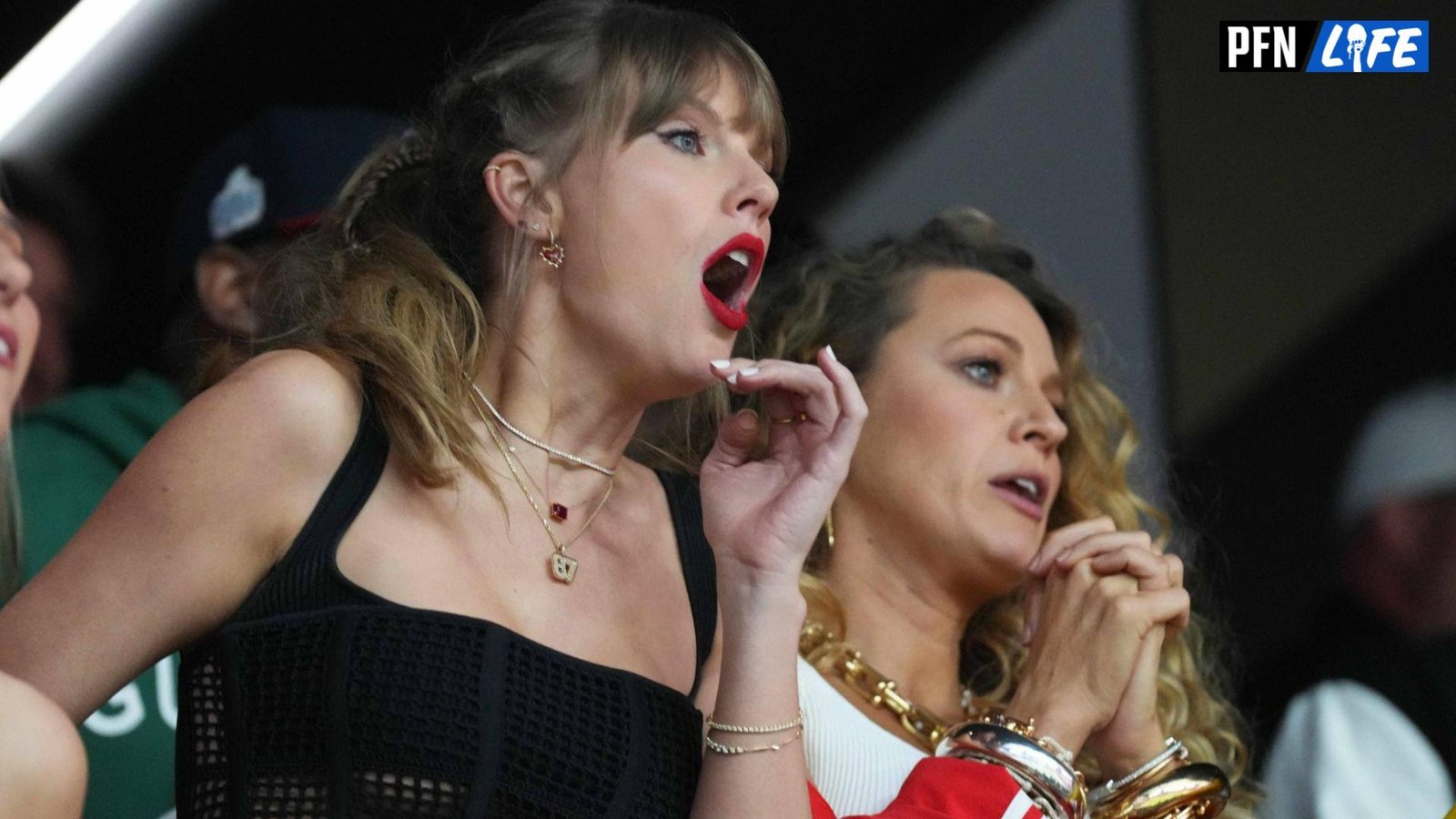
Global superstar Taylor Swift made it to the big game to support her boyfriend, Kansas City Chiefs star tight end Travis Kelce. In the second quarter, it was evident that she was having a good time at the Super Bowl after taking a 12-hour flight from Tokyo the night prior.
Taylor Swift Seen Chugging Beer at Super Bowl
Swift’s attendance has been highly anticipated, as many fans questioned whether she would be able to make it to the big game since she had been in Japan until Saturday for her Eras Tour.
Sure enough, she made it to the Super Bowl and was seen making a grand entrance alongside Blake Lively and Ice Spice.
Swift made it back to the States with plenty of time to make it to Allegiant Stadium to support Kelce. After a leg of her Eras Tour, where she performed several nights in Japan, the singer appeared to let loose.
In a box full of friends, Swift was shown chugging a beer with Ashley Avignone. She was shown on the jumbotron and slammed her cup down after she finished her beer.
Legend 😂 pic.twitter.com/hk27JTAXZ9
— Pro Football Network (@PFN365) February 12, 2024
There was a mix of cheers and boos as Swift was shown on the big screen, and a long pass to Mecole Hardman was the only highlight of the first half for Swift and her friends. The 49ers led the Chiefs, 10-0, late in the second quarter.
On social media, Swift garnered plenty of support from NFL fans.
“If you’re hating on her you can kick rocks man she’s the best,” one user posted on X.
“The one thing I learned this season is that she is actually fun,” another said.
“Booing Taylor Swift chugging a beer is so soft. She’s just one of us now and I respect it ,” another posted.
At the time of the beer chugging, Kelce, Taylor Swift’s boyfriend, has had one catch for a single yard. It came on the first possession, which ended up being a three-and-out. The Kansas City Chiefs hadn’t done much otherwise.
They did have a deep pass play to Hardman, which put them in the red zone, but Isiah Pacheco fumbled on the very next play — one that Kelce was surprisingly on the sideline for.
Swift and Kelce have garnered much media attention as their romance has taken off throughout this NFL season.
Swift was able to support her boyfriend at many of his games throughout the final stretch of the season, as her Eras Tour was on a break. But starting on Feb. 7, she went back on the road.
MORE: NFL World Reacts to Unbelievable Super Bowl Trick Play
Despite performing in Tokyo the night before the Super Bowl, she was able to make it in time to support her boyfriend due to the time difference and is having a good time doing so.
As the 2023 NFL season comes to a close, the 2024 NFL Draft is on the horizon. Pro Football Network has you covered with everything from team draft needs to the Top 100 prospects available. Plus, fire up PFN’s Mock Draft Simulator to put yourself in the general manager’s seat and make all the calls!
Listen to the PFN Fantasy Podcast
Listen to the PFN Fantasy Podcast! Click the embedded player below to listen, or you can find the PFN Fantasy Podcast on iTunes, Spotify, and all major podcast platforms. Be sure to subscribe and leave us a five-star review! Rather watch instead? Check out the PFN Fantasy Podcast on our Fantasy YouTube channel.
NFL
What Happened to the 49ers Linebacker?

The San Francisco 49ers sustained a massive blow during the second quarter of Super Bowl 58, as linebacker Dre Greenlaw left the game on a medical cart.
CBS Sports confirmed that the veteran Greenlaw suffered an Achilles tear, ruling him out for the rest of the game against the Kansas City Chiefs.
What Happened to Dre Greenlaw?
The outside linebacker, who had already been battling past injuries to his hamstrings and calves, left with what appeared to be a leg injury.
And somehow, his left leg looked like it buckled as he tried to trot onto the field with the Niners’ defense.
#49ers LB Dre Greenlaw appeared to suffer an injury while running on the field.
— Pro Football Network (@PFN365) February 12, 2024
Greenlaw clutched his left leg in agony before being helped off the field.
CBS Sports sideline reporter Evan Washburn reported that the outside linebacker left with what was ruled as a lower leg injury. He was later determined to sustain an Achilles injury.
Greenlaw was declared out for the rest of the game.
#49ers LB Dre Greenlaw (Achilles) is now officially out for the game.
— Tom Pelissero (@TomPelissero) February 12, 2024
Greenlaw Carted Off in Passenger Seat
Even more noticeable was where Greenlaw sat on the cart.
He ended up leaving not in the back of the medical vehicle but ended up riding shotgun with his leg injury.
He can’t sit in the back? pic.twitter.com/9jpz0rdoF1
— Big Cat (@BarstoolBigCat) February 12, 2024
One would think that with an injury like an Achilles ailment, medical officials would try to make the player as comfortable as possible before they leave. It wasn’t the case here.
MORE: San Francisco 49ers Depth Chart
Regardless, Greenlaw was replaced by Demetrius Flannigan-Fowles for the rest of the first half. Greenlaw became the most significant injury of the game.
As the 2023 NFL season comes to a close, the 2024 NFL Draft is on the horizon. Pro Football Network has you covered with everything from team draft needs to the Top 100 prospects available. Plus, fire up PFN’s Mock Draft Simulator to put yourself in the general manager’s seat and make all the calls!
Listen to the PFN Fantasy Podcast
Listen to the PFN Fantasy Podcast! Click the embedded player below to listen, or you can find the PFN Fantasy Podcast on iTunes, Spotify, and all major podcast platforms. Be sure to subscribe and leave us a five-star review! Rather watch instead? Check out the PFN Fantasy Podcast on our Fantasy YouTube channel.
NFL
NFL World Reacts to Epic Super Bowl Intro From CBS
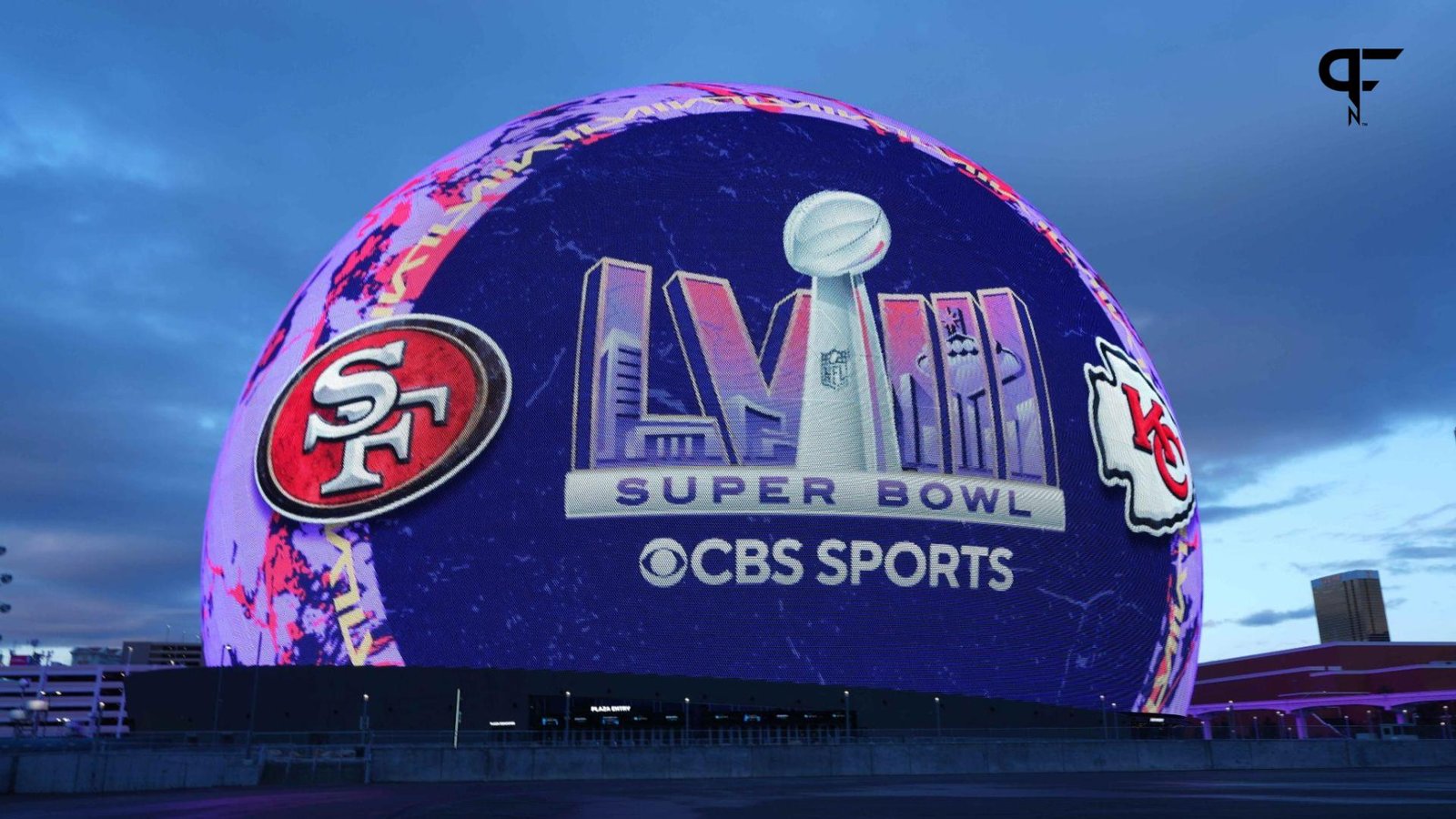
Super Bowl 58 is here and it’s going to be exciting. The San Francisco 49ers and Kansas City Chiefs are facing off in the final game of 2023.
CBS is broadcasting the game and the opening was nothing short of amazing. How is the NFL world reacting to the electric Super Bowl-opening video?
Epic CBS Super Bowl Intro Garners Reaction From NFL World
The video, which spanned four minutes and 19 seconds, featured players from both teams talking about the big game and what it means to them. It also featured their families talking about their journeys to this point.
“Amazing intro! Reminds me of my dad! Bravo on the intro!,” one NFL fan said on X (formerly known as Twitter)
And now, the end is near.
And so, the @49ers and @Chiefs face that final curtain. pic.twitter.com/YgIEGOAMb1
— CBS Sports (@CBSSports) February 11, 2024
Additionally, Frank Sinatra’s “My Way” played in the background, giving it a near-movie feel. “This was incredible.,” another person said on X. “And so, the @49ers and @Chiefs face that final curtain,” CBS Sports said.
The 49ers finished the regular season as the top seed in the NFC with a 12-5 record. After their first-round bye, they defeated both the Green Bay Packers and Detroit Lions to earn their trip to Las Vegas for the Super Bowl. Both of their victories came in comeback fashion, including an NFC Championship-record 17-point comeback.
The Chiefs, on the other hand, had a more uphill battle. Entering the playoffs as the AFC’s third seed, they finished the regular season with an 11-6 record. In the playoffs, they defeated the Miami Dolphins, Buffalo Bills, and Baltimore Ravens to punch their ticket.
Super Bowl 58 is a re-match of Super Bowl 54 when the Chiefs defeated the 49ers 31-24. The win was the first in Patrick Mahomes career, as he also won Super Bowl MVP. Four years later, the Chiefs have made three more and won another. For the 49ers, this is their first trip back to the big game since.
The game kicked off at 6:30 p.m. ET with the 49ers receiving the opening kick. In addition to being broadcast on CBS, the game is also being streamed on Paramount+.
As the 2023 NFL season comes to a close, the 2024 NFL Draft is on the horizon. Pro Football Network has you covered with everything from team draft needs to the Top 100 prospects available. Plus, fire up PFN’s Mock Draft Simulator to put yourself in the general manager’s seat and make all the calls!
Listen to the PFN Fantasy Podcast
Listen to the PFN Fantasy Podcast! Click the embedded player below to listen, or you can find the PFN Fantasy Podcast on iTunes, Spotify, and all major podcast platforms. Be sure to subscribe and leave us a five-star review! Rather watch instead? Check out the PFN Fantasy Podcast on our Fantasy YouTube channel.
-

 NFL2 years ago
NFL2 years agoWho are the best wide receivers still available late on Day 2?
-
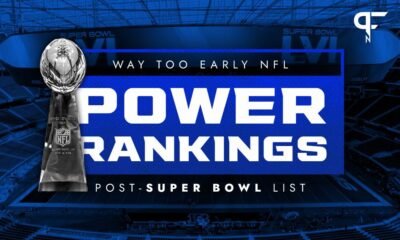
 NFL2 years ago
NFL2 years agoAFC dominates post-Super Bowl list
-

 UFC2 years ago
UFC2 years agoBREAKING : Khamzat vs Gilbert Burns UFC 273 | Usman Vs Edwards UFC 272
-

 NFL2 years ago
NFL2 years agoLos Angeles Rams salary cap situation heading into 2022
-
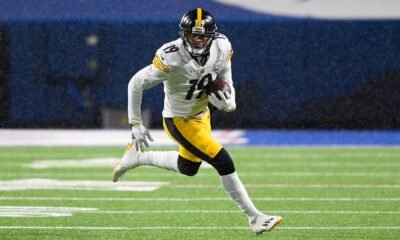
 NFL2 years ago
NFL2 years agoCould the Chiefs, Jets, Colts, or Patriots make a run at the former standout?
-

 Moto Gp2 years ago
Moto Gp2 years agoDOWNLOAD Game MotoGP 2021 Terbaru Ukuran Kecil Update PPSSPP Android
-

 Moto Gp2 years ago
Moto Gp2 years agoDownload MotoGP 2021/2022 Ppsspp Android Offline
-
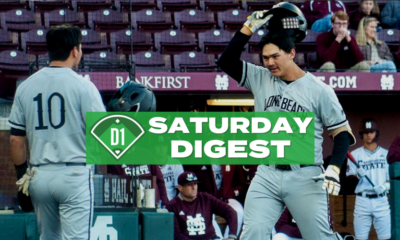
 Baseball2 years ago
Baseball2 years agoAnother Long Beach Triumph Headlines Action • D1Baseball

